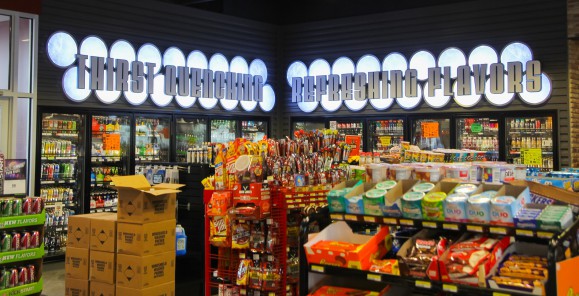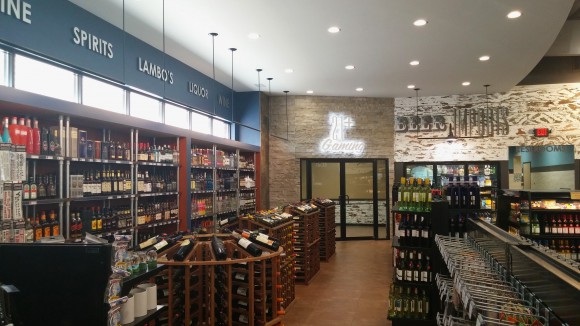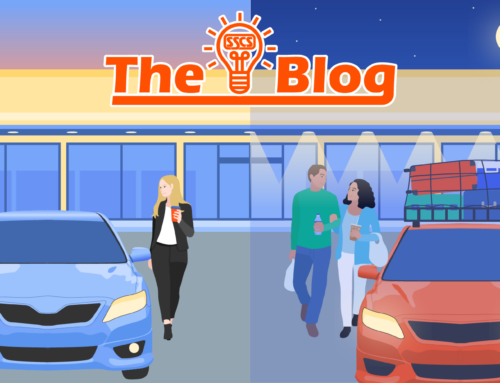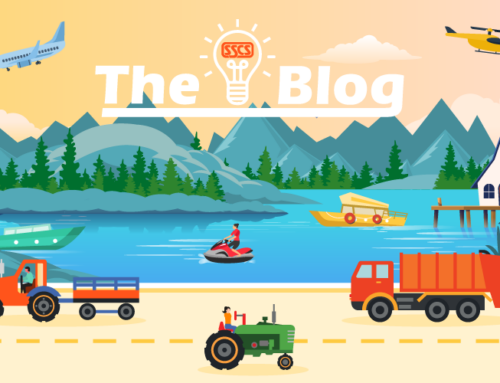Part 2
If you missed part 1 of this interview, which contains an introduction that explains the focus of Mr. Lawshe and his firm, as well as other illustrations of their work, please click here.

Eddie’s
St. Louis, Missouri
SSCS: In general terms, are there any design best practices that petroleum retailers should follow?
ML: To me the three basics are understanding your demographic, conducting an accurate foot traffic flow analysis, and building each of your store programs to be the best it can be at addressing the desires of the identified customer base. Let me explain that in a little more detail.
The first action anyone should undertake when building a new store or updating an existing one is performing a detailed demographic study of the location. Too many people think they can build the exact same thing they saw in a different part of town and make it work. That’s not true. You have to know from where your store traffic is coming. Are you a beer store or a lunch store? Are you a morning store or a night store?
Once you identify your demographic, you can set about doing a couple of things. The first is establishing an effective, profitable foot traffic analysis that allows you to design effective retail flow through. For example, according to NACS averages, more than 38 percent of foot traffic is destined for the walk-in cooler. That means you want to use the cooler to pull people deep into the store and give them the opportunity to pass by the largest possible selection of products to consider for purchase.
Then you have to find out how you can do a better job catering to your demographic than your competitors. If it is determined that the store is a beer location, you try to design the ultimate beer cave, but you can’t be naïve how easy that is, because it’s not. It’s about lighting and environment and temperature—there are a lot of elements that go into a superior beer cave presentation. This kind of thoughtful analysis has to be applied to every profit center in the store.

fuelmart
Perrysburg, Ohio
SSCS: Do your customers and prospects come to you with a set idea of what it is they need your help to accomplish, or is it more nebulous than that?
ML: We find that a lot of times that people who are interested in our help don’t have a clear picture of the realities of their own operation. They may sense something is amiss, but they can’t identify it precisely and don’t know its extent.
Our initial step is to come out and to evaluate their site with the intention of helping them identify the problem and provide some steps to address it. We’ll map out a short-term and a long-term strategy. Examples of short-term issues might be missing key product lines and weak merchandising practices, problems that can be rectified with little to no financial investment.
Once you get through these kinds of basics, you start moving to address the more complex, creative stuff from the store’s holistic perspective.
We always listen to what the customer has to say first, then we try to educate them. The education part is critical. We hand-hold them and walk them through the entire process. Together you have to dig deep into the operation, of which there are many layers.
The easiest thing in the world for an operator to do is to repeat the same thing he or she did last time. We know our clients are incredibly busy. The last thing they need is another new challenge that they aren’t particularly well-equipped to address. I mean, how often does a proprietor design a store? So what we ask them to do is to venture out of their comfort zone and let us guide them through a process that allows them to reach higher and farther than they ever have before. The process is definitely not for the faint-hearted, but the results are immensely rewarding in more ways than one.

Lambo’s
Tuscola, Illinois






Leave A Comment